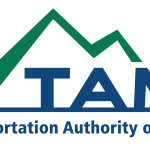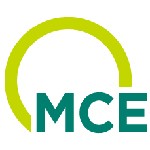Napa Earthquake One Year on and the Economics of Readiness

On August 24, 2014, Napa County experienced a natural disaster that no part of California wants to ever experience: an earthquake that affects the downtown area. The City of Napa was hit particularly hard, and the visual damage provided some reminders of a similar outcome 108 years earlier from San Francisco northward. Among the many differences between the 1906 earthquake and the 2014 earthquake in this region was that Napa was ready for this and the community rallied with its support and with its recognition that Napa’s visual aesthetic is very important to its main industry: tourism.
Marin County can learn from the speed and agility with which Napa County rallied. By November 2014, Napa had turned many corners in terms of the financial issues of recovery from the earthquake; to walk around in Napa and not know what happened there otherwise had the feel of major construction work and not reacting to a natural disaster. Because tourism is a major economic driver for Napa County and the City of Napa in specific, clearing the streets and confirming the safety of each business was critical in the economic effects of the quake not lingering beyond the necessary items.
Disaster recovery planning is an essential part of any business. Many businesses do not have such planning. Because Marin County is dominated by businesses with fewer than 20 employees, trying to reach out to a large, disaggregated set of businesses in a time of crisis may be difficult. On the business side, disaster relief plans provide the business the path to make sure there are essential services up and running quickly, back up storage is in place for information vital to the business continuing as a going concern, and safety measures for all employees. On the community side, the coordination of medical and emergency services, utility reactions and the need for moving food and water to parts of the community otherwise cut off from such essentials is critical. Organizations, such as Ready Marin, provide tips and planning for households.
For more than two years, Marin Economic Forum has been part of an effort to look at Marin County disaster preparedness. Garry Lion, Vice Mayor of Mill Valley and MEF Board Member, has been our lead on this effort and the driver of the effort countywide. The coordination of economic activities and the ability of Marin County to keep its businesses open (no matter how localized the natural disaster) is of critical importance to the speed at which Marin County would recover from flooding, earthquake, fire, or any other generalized problem. Vice Mayor Lion will provide an overview of this effort in our Board Corner; the basic idea is how to coordinate relief efforts to Marin County businesses and residents in such a way to not stop business outcomes. See www.cityofmillvalley.org/ready for more on this effort.
It is also important to see disaster recovery as a regional issue. Because it is unlikely that a generalized disaster will remain on one side of county borders, Sonoma, San Francisco, Napa, Contra Costa and other surrounding counties will need to be coordinated to help locally and regionally. Marin County businesses, for example, may be asked to provide goods and services to help relieve pressure in other areas, similar to what happened in Napa County last August. If your business does not have a disaster relief plan, please consider one soon; the internet resources on this are plentiful. The economics of Marin County may depend on how prepared the county and region are for the next big disaster when (not if) it happens.














